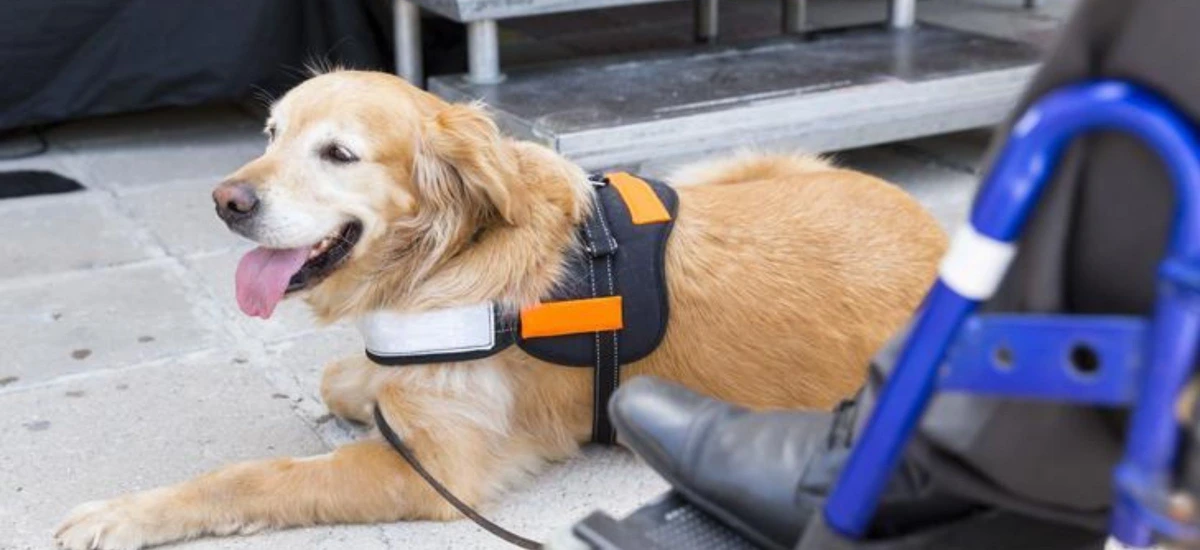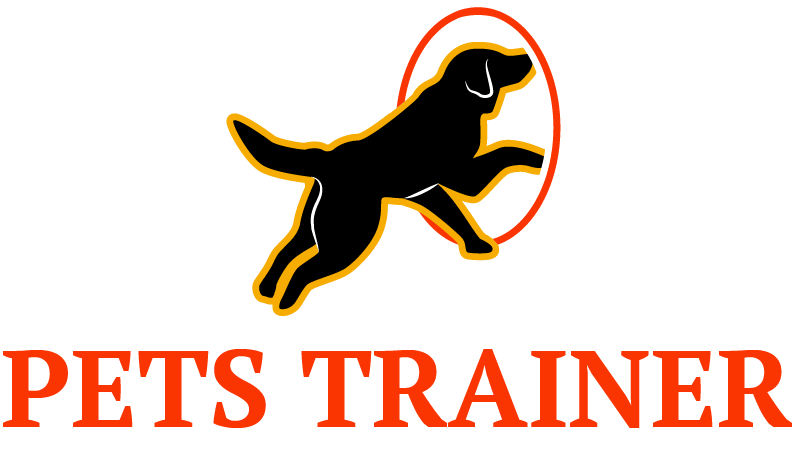Table of Contents
ToggleHave you ever witnessed the magical bond between a therapy dog and a needy person? The power of this connection is truly remarkable and offers immense benefits to the dog and the individual.
As a vet In this article, I will explore the fascinating world of therapy dog training activities, delving into the innovative techniques and heartwarming experiences that make these loyal canines indispensable companions in therapeutic settings.
Therapy dogs provide comfort, support, and joy to people facing various challenges, from medical conditions to emotional distress. Through specialized training activities, these four-legged heroes learn how to interact with individuals in hospitals, nursing homes, schools, and other environments where their presence can make a profound difference.
The Essence of Therapy Dog Training Activities
Obedience training, socialization, and specialized activities are all combined in training therapy dogs to provide these furry heroes the tools they need to engage with a wide range of people. These exercises go beyond the simple sit-and-stay directives; instead, they emphasize developing patience, empathy, and an intrinsic capacity to interact with others in various settings.
7 Key Training Activities for Therapy Dogs
Socialization Sessions
Socialization sessions play a crucial role in the training of therapy dogs. Early exposure to different environments, people, sounds, and animals is fundamental for helping them adapt to the varied settings they encounter during work. By introducing them to diverse stimuli early on, therapy dogs can become more adept at remaining calm and focused in potentially hectic or unfamiliar situations.
Socialization also helps them develop confidence and a positive attitude toward new experiences, which is essential for effective therapy dog work. In addition to socialization sessions, obedience training is another key training activity for therapy dogs.
Basic Obedience Training
Basic obedience training forms the foundation of therapy dog training, setting the stage for more advanced activities. Teaching commands like sit, stay, come, and leave instills discipline in the dog and ensures they can listen and respond effectively to their handler’s cues in various environments. This helps in creating a strong bond between the dog and their handler.
Incorporating agility exercises into a therapy dog’s training routine can enhance their physical abilities and mental acuity. Agility courses involve navigating obstacles such as jumps, tunnels, and weave poles, which keeps the dogs physically fit and boosts their confidence and problem-solving skills.
Desensitization Exercises
Desensitization exercises are crucial to training therapy dogs to remain calm and composed in various environments. Exposing dogs to potentially startling stimuli such as wheelchairs, crutches, or medical equipment helps them overcome fear and anxiety, allowing them to become more confident and reliable companions for those in need.
By gradually introducing these stimuli in controlled settings, therapy dogs can learn to focus on tasks without becoming overwhelmed by unfamiliar or unexpected sights and sounds. Moreover, desensitization exercises enhance a dog’s ability to cope with challenging situations and foster empathy and understanding towards individuals with disabilities.
Through repeated exposure to different mobility aids and medical devices, therapy dogs develop a deeper level of comfort and acceptance towards people using these tools, making them more suitable for emotional support and assistance.
Ultimately, desensitization activities play a vital role in shaping therapy dogs into adaptable, compassionate partners capable of making a meaningful impact on the lives of those they encounter.
Sensory Training
Sensory training is crucial in preparing therapy dogs for their important work. This training focuses on enhancing a dog’s ability to recognize and respond to sensory stimuli like touch, sound, and smell. By incorporating activities that emphasize sensory awareness, therapy dogs can develop the skills needed to comfort and support individuals with diverse sensory needs.
For example, interactive games that encourage dogs to use their sense of smell to locate hidden objects can help them become more attuned to the olfactory cues in their environment.
By integrating sensory-centric practices into therapy dog training activities, handlers can ensure holistic preparation for these invaluable companions.
Understanding how each layer of sensory input impacts the dog and the individual receiving care is essential for fostering impactful therapeutic connections through empathy and understanding.
Calmness and Comfort Training
One innovative approach to calmness and comfort training involves incorporating relaxation techniques such as aromatherapy or massage into the dog’s routine. This not only aids in cultivating a soothing presence but also enhances the bond between the dog and their human partner.
Moreover, simulating scenarios that commonly cause stress or anxiety for people, including loud noises or crowded spaces, allows therapy dogs to acclimate to these conditions and offer a calming influence when encountering them during their service.
Ultimately, by prioritizing calmness and comfort training in therapy dog programs, we can further elevate their capacity to bring solace and serenity to those seeking emotional support.
Role-Playing Scenarios
Role-playing scenarios are a crucial part of therapy dog training activities. These exercises allow dogs to simulate real-life situations they may encounter during therapy visits, preparing them to remain calm and focused in challenging environments.
Role-playing scenarios can include simulating hospital rooms with medical equipment, crowded spaces with loud noises, or interactions with individuals using mobility aids.
By exposing therapy dogs to these scenarios in a controlled setting, trainers can assess their reactions and provide the necessary guidance for improvement. Moreover, incorporating role-playing scenarios into therapy dog training helps build the dog’s confidence and adaptability.
Certification and Evaluation
Certification and evaluation are crucial steps in the training process for therapy dogs. Handlers and their dogs undergo rigorous assessments during certification to determine their suitability for therapy work.
The evaluation involves testing the dog’s behaviour, temperament, and obedience in various simulated scenarios to ensure they can handle the often unpredictable environments of therapy settings.
This phase also involves evaluating the handler’s ability to effectively manage their dog in different situations, reinforcing their bond. During certification and evaluation, key training activities for therapy dogs include desensitization to loud noises, unfamiliar objects, and crowded spaces to prepare them for potentially challenging environments they may encounter while on duty.
Benefits of Therapy Dog Training Activities
Apart from the obvious advantages for individuals undergoing therapy, the training exercises themselves have several benefits:
Bond Strengthening
Therapy dog training activities are invaluable in strengthening the bond between dogs and their owners. Through these activities, the dog and the owner develop increased trust, communication, and understanding of each other’s needs.
The shared training experience fosters a deep sense of cooperation and companionship, creating a solid foundation for an unbreakable bond.
Mental Stimulation
Therapy dog training provides an invaluable opportunity for mental stimulation, benefiting both the dog and its handler. The various training exercises stimulate the dog’s mind, encouraging problem-solving skills and enhancing cognitive function.
Dogs thrive on mental stimulation, and incorporating training activities into their routine can prevent boredom, reduce anxiety, and increase overall happiness.
Participating in therapy dog training activities can also provide a mental boost for handlers. Focusing on teaching their furry companion new tricks or commands can serve as a form of mindfulness practice, promoting relaxation and reducing stress.
Community Engagement
Therapy dog training activities offer many benefits, and one of the most impactful is community engagement. These activities provide mental and emotional support to individuals in need and foster a sense of empathy and connection within the community.
By participating in therapy dog programs, communities can come together to support those facing challenges such as illness, trauma, or loneliness.
This shared experience promotes understanding and compassion, creating a more cohesive and supportive environment for all involved.
Furthermore, therapy dog training activities contribute to breaking down social barriers by bringing people from different backgrounds together. Whether it’s visiting hospitals, nursing homes, or schools, therapy dogs have a unique ability to connect with individuals of all ages and backgrounds.
Therapy Dogs Decrease Blood Pressure
Therapy dogs have been proven to decrease blood pressure in individuals through their calming presence and affectionate demeanour. Engaging in therapy dog training activities benefits the dogs and gives their human companions a sense of purpose and fulfilment. Animal therapy benefits extend beyond just physical health, as the emotional support offered by these furry friends profoundly impacts one’s overall well-being.
Participating in therapy dog training activities can be a rewarding experience for both the dogs and their handlers, fostering a strong bond built on trust and understanding. By incorporating therapy dogs into healthcare settings, such as hospitals or nursing homes, patients are able to benefit from the therapeutic effects of these animals, creating a more positive healing environment.
Conclusion
In conclusion, therapy dog training activities are not only beneficial for the dogs but also for the individuals they interact with. Engaging in obedience training, socialization exercises, and specific therapy dog tasks can significantly enhance the bond between the dog and their handler.
These activities also contribute to the overall well-being of the dog and the people they provide comfort to. By investing time and effort in training therapy dogs, you can ensure they are well-prepared to bring joy and support to those in need.
FAQs
1. What are some basic training activities for therapy dogs?
Basic training activities include sit, stay, come, and leash manners.
2. How can I socialize my therapy dog?
Socialize your therapy dog by exposing them to different environments, people, and animals.
3. Are there specific obedience exercises for therapy dogs?
Yes, therapy dogs should be proficient in obedience exercises such as leave it, drop it, and heel.
4. What types of mental stimulation activities are suitable for therapy dogs?
Mental stimulation activities like puzzle toys, scent work, and obedience challenges are suitable for therapy dogs.
5. Can I incorporate agility training into my therapy dog’s routine?
Incorporating agility training can help keep your therapy dog physically fit and mentally engaged.
6. How do I train my therapy dog to remain calm in various settings?
Train your therapy dog to remain calm in various settings through desensitization techniques and positive reinforcement.
7. Can specific bonding activities strengthen the bond with my therapy dog?
Grooming, massage, and gentle playtime can strengthen the bond with your therapy dog.
8. What relaxation techniques can benefit therapy dogs during their downtime?
Relaxation techniques such as calming music, massage, and aromatherapy can benefit therapy dogs during their downtime.

Dr. Usman Bajwa, a dedicated veterinarian with a passion for pets, brings years of expertise to the world of pet grooming. Through his blog, he shares valuable insights and practical tips to help pet owners provide the best care for their furry companions. With a focus on promoting the health and happiness of pets, Dr. Usman articles offer easy-to-follow guidance on grooming techniques. When he’s not writing, you can find him at his clinic or enjoying time with his own beloved pets.




